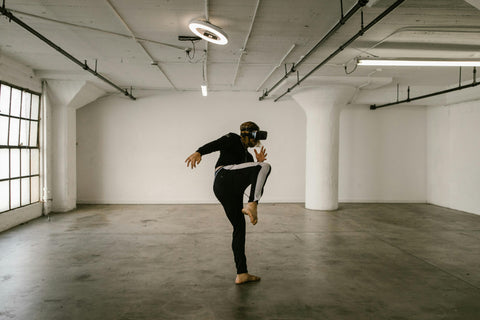
YOGA VS. MEDITATION — WHICH OPTION IS RIGHT FOR YOU?
If you find yourself confused about yoga vs. meditation, know that you are not alone. This distinction between the two modalities is not as easy as it sounds. Both of them are equally effective exercises, but you need to figure out which one works best for you. Here is a little guide to help you navigate.
Yoga Vs. Meditation: The Main Difference
Simply put, yoga includes internal, external and mental stability. Meditation, on the other hand, comprises only mental stability, which can be obtained through yoga. But to get a better understanding, let's first explain the meaning of the two words and where they came from.
Yoga is an old Sanskrit word, which translates to the word "union". This union implies how the soul of an individual is connected to the spirit of the universe. Yoga does not only describe the presence of this “union” but is also a way to accomplish this state.
Meditation, on the other hand, is derived from the word “Dhyana” which is the 7th member of yoga. It is basically a state of consciousness. In other words, in this state, your yoga practitioner focuses on your mental state and temporarily switches off your senses along with external distractions.
What is yoga?
Yoga is a traditional form of exercise, which has been performed since ancient times and has proved helpful. These exercises must be practiced regularly and efficiently. The objective of the method is to obtain general stability of the body, that is, internal, external and mental.
The practice of yoga involves eight steps:
1. Yama
It refers to controlling negative emotions such as envy, jealousy, enmity, greed, selfishness, passion, etc. This step is seen as essential for activating consciousness in an individual.
2. Niyama
It aims to keep good thoughts and regularity and punctuality in time.
3. Asana
It refers to the set of yoga exercises that must be conducted in coordination with the breath. In addition to strengthening the muscles, these movements facilitate the proper flow of energy connecting "the brain-body system".
4. Pranayama
It is associated with mindful breathing, which facilitates full and deep inhalation and exhalation of the breath.
5. Pratyahara
It consists of the internalization of consciousness. The purpose is to maintain a state of observation or witness of the body's actions and its mental activity.
6. Dharana
It refers to the focus of attention.
7. Dhyana
At this stage, the goal is to keep the mind focused on one thought and gradually increase the length of time the mind stays focused on that single thought.
8. Samadhi
It is the journey of personal self-realisation when the practitioner obtains the ability to travel alone, guiding himself within.
What is meditation?
Meditation generally refers to the effort of emptying the mind of all thoughts and gradually increasing the duration of that state. The method originated in the Vedic period in ancient India when it was practiced by ancient Hindus.
In short, it is a practice in which an individual trains the mind or induces a mode of consciousness. In meditation, a person stays in one place and seeks inner mental stability. It is not an easy process to achieve and is basically used to improve personal development. Currently, Buddhists and yoga adepts use this term to combine the three stages of yoga: p ratyahara, d harana and d hyena.
What to choose: yoga or meditation?
As you might have already understood that meditation is a part of yoga and you can’t really choose between the two, but you can definitely make your exercise sessions more focused on one of the two components.
If you are a patient of anxiety and you find often find yourself engrossed in mental health problems like depression, anxiety, work stress, or any other kind of issues that you think are a burden on your mental health; meditation might be the best option for you. Meditation teaches you mindfulness and gives you a break from your hectic routine.
On the contrary, if you are aiming for better physical health as well as mental health, yoga should be your best friend. It not only consists of mindfulness exercises but physical workouts as well to get you in shape.
Figuring out what works the best for you between yoga vs. meditation isn’t a problem. The real deal is to get a grip on all the mindfulness exercises, as they require a lot of focus. Both the exercises are somewhat related to each other, so you will be doing both simultaneously, at most times.About the Author

Qurat Shahzad
Qurat-ul-Ain is a dedicated writer who likes to write anything and everything.



